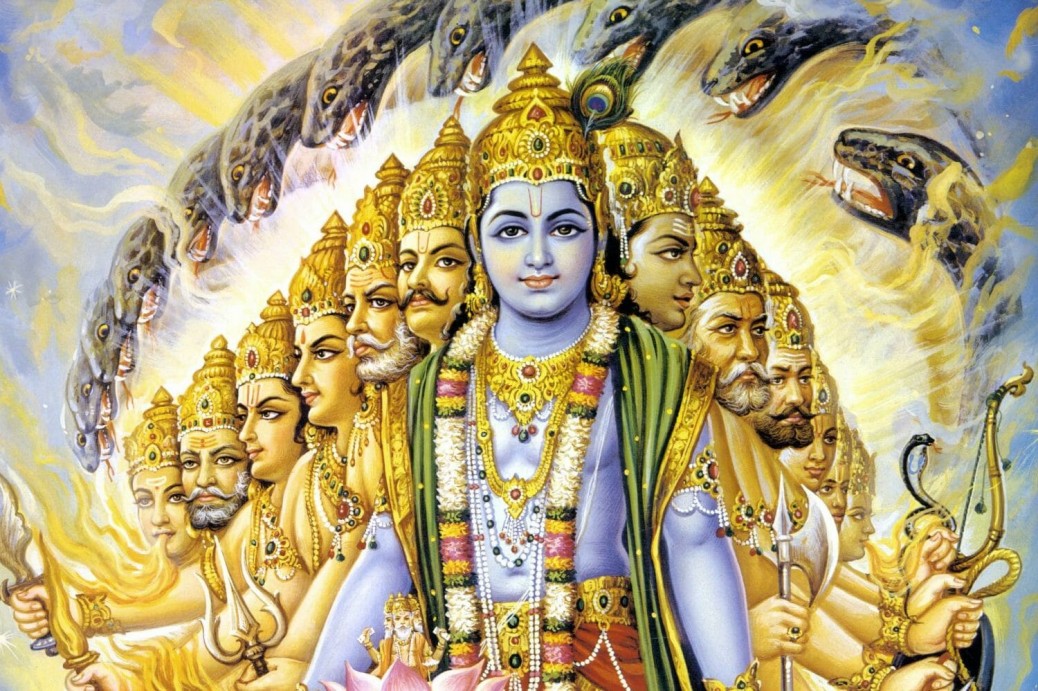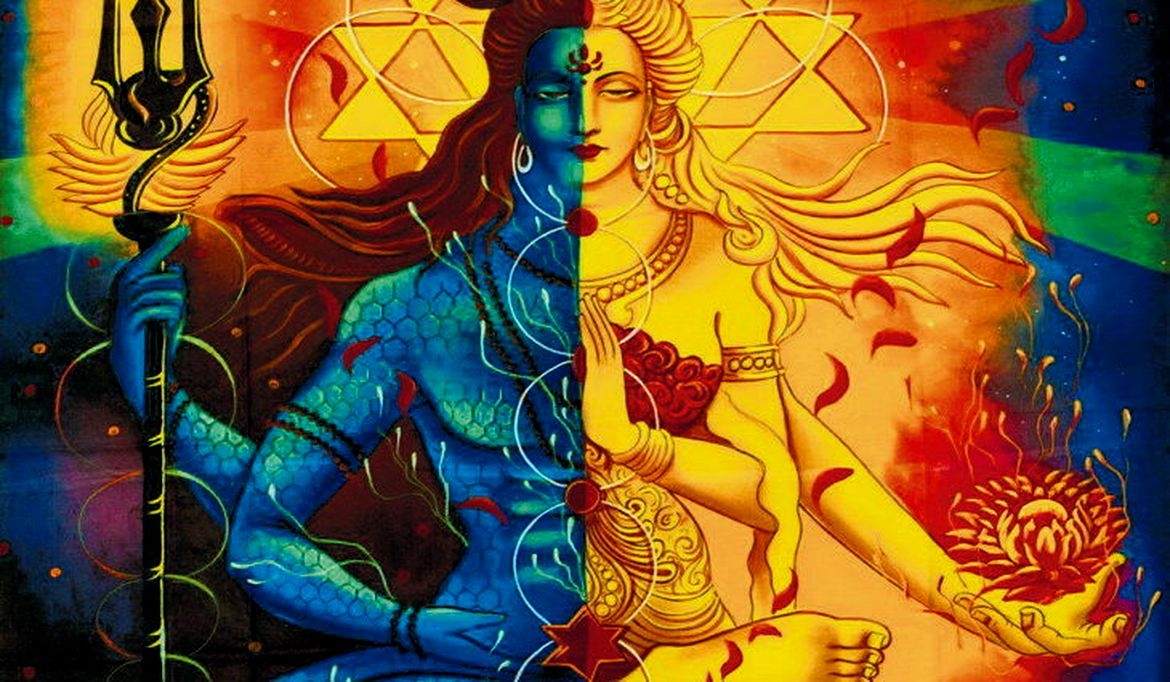It Is Eternal – In Gita Verse 8.4 O best of the embodied beings, the physical nature, which is constantly changing, is called adhibhūta [the material manifestation]. The universal form of the Lord, which includes all the demigods, like those of the sun and moon, is called adhidaiva. And I, the Supreme Lord, represented as the Supersoul in the heart of every embodied being, am called adhiyajña [the Lord of sacrifice].
Try to understand what Krishna is saying. He says that whatever comes and goes are forms, including sun, moon or what we call demigods. They all are forms but the existence which is always there is formless. This formless – is present in every form.
It will be easy to understand this verse by LaO Tzu’s this sutra:
NEITHER BY ITS RISING IS THERE LIGHT, NOR BY ITS SINKING IS THERE DARKNESS.
UNCEASING, CONTINUOUS, IT CANNOT BE DEFINED.
IT REVERTS AGAIN TO THE REALM OF NOTHINGNESS.
THAT IS WHY IT IS CALLED THE FORM OF THE FORMLESS; THE IMAGE OF NOTHINGNESS. THAT IS WHY IT IS CALLED ELUSIVE.
MEET IT AND YOU DO NOT SEE ITS FACE.
FOLLOW IT AND YOU DO NOT SEE ITS BACK.
HE WHO HOLDS FAST TO THE TAO OF OLD, IN ORDER TO MANAGE THE AFFAIRS OF NOW, IS ABLE TO KNOW THE PRIMEVAL BEGINNINGS, WHICH ARE THE CONTINUITY (TRADITION) OF TAO.
The flowers bloom in the morning and wither in the evening. The sun rises in the morning and sets in the evening. There is birth and it ends in death. Each happening has a beginning and an end.
But existence always is. There is no morning, nor evening for existence, neither birth nor death. In this sutra, Lao Tzu tells us about the beginningless, infinite continuity of the nature of existence, that is beyond both birth and death.
Whatever we know, we can encircle within a limit. On one end of this boundary there lies its beginning, and on the other, its end. All that can be confined within boundaries can be defined.
Definition can only mean that which we can encircle within our thoughts. But it is impossible to define that which has no beginning and no end, for the simple reason that we cannot confine it within the circumference of our thoughts. From where should we draw the line and where should we end it? Therefore, existence can never be defined. Existential objects can be defined, but not existence itself.
Let us understand it in this way. This sutra is rather difficult, so we shall have to unfold its secret from many sides. We see a flower and we say it is beautiful. The moon comes out in the sky and we say it is beautiful; we like a face and we say it is beautiful; some music touches the chord of our heart and we say it is beautiful. But have you ever seen beauty? Some songs are beautiful, some flowers are beautiful, some stars in the sky. You have seen things that are beautiful, but have you seen beauty itself? Then, a difficulty arises. If you have never seen beauty, how can you say a certain thing is beautiful? You see beauty in a flower, but you have never seen beauty itself. The beauty of a flower blooms in the morning and withers by dusk. A face appears beautiful today, but tomorrow the beauty vanishes. That which is here today is lost tomorrow: that which you saw in the morning is gone by the evening. Have you seen ‘that’ apart from the objects? Have you ever seen pure beauty? You have seen beautiful things but not beauty.
The flower can be defined – it has its own form, its own shape, its own marks of recognition. But beauty itself cannot be defined. It has no boundaries, it has no form, no marks of recognition. And yet we recognise it, or else how can we say the flower is beautiful? But if the flower alone is beautiful, the moon at night cannot also be beautiful, because what is there in common between the flower and the moon? This means that beauty is that which is in a flower, in the moon, in the eyes and yet apart – it is something different from all these. The eyes that looked beautiful a moment ago look hard and ugly with anger a moment later. The same eyes that looked beautiful, now are ugly – something has been lost. This proves that beauty is not a flower or the moon or the eyes; beauty is something else. Have you met it face to face? Never.
We have never seen beauty, never known it, therefore beauty cannot be defined. And yet, we recognise beauty. When the mystery of beauty enters the flower, when its smoothness and tenderness permeates within it, we say the flower is lovely. When this same mystery enters into the eyes of someone, the eyes appear beautiful. When the same mystery manifests within the notes of a melody, it sounds sweet to the ears. But what is this beauty, this loveliness? The flower can be defined, so can the moon and the eyes, but what is beauty? It is indefinable. Why? Why can we not define beauty?
We know what beauty is. We come across it on some unknown path. It enters our heart in some unknown way and it thrills our soul in some unknown manner. And yet, we do not know what it is. Whenever the intellect tries to grasp it we find it is lost. It is somewhat like this. Darkness fills a room. We take a lamp to see where darkness is – and it is lost! Wherever the boundless is, if we approach it with our intellect, it disappears. The intellect can only recognise things within its boundaries. The intellect can only know that, which is – bounded. A thing can come within the grasp of our understanding only when the intellect can decide its limits – only when it can form its periphery and divide it in parts. It is, therefore, that the intellect goes on dividing things into smaller and smaller sections. The smaller the fraction, the deeper is the understanding.
The intellect is keen to divide even these further; because the smaller the thing, the better it can be examined and defined. The bigger the expanse, the less possible it is for the eyes to Find its ends; and when the intellect cannot measure, it falls into difficulties and goes astray.
Says Lao Tzu, “Nothing is illumined when it appears, and nothing is darkened when it disappears.”
Krishna says – Such is the imperishable, uninterrupted mystery which defies all definitions. It always is; it is eternal.
Tags: It Is Eternal




